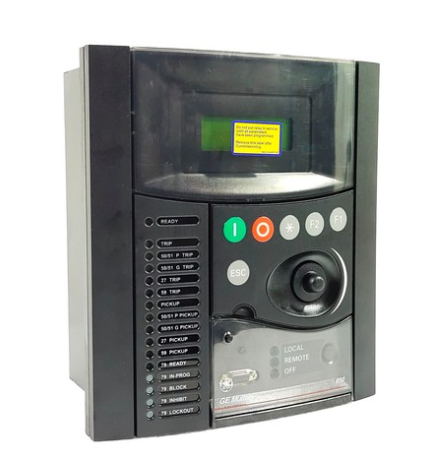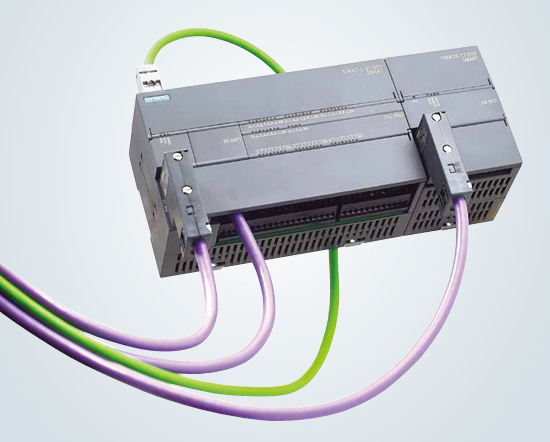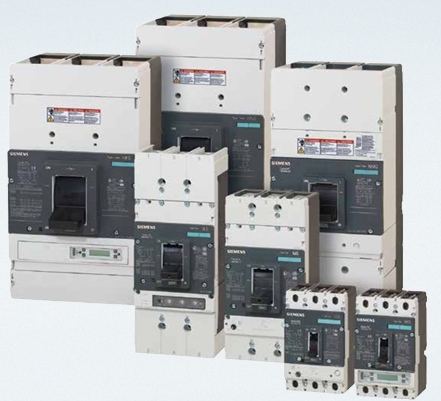The GE F650BFBF2G0HIE feeder protection relay is a high-performance protection device launched by General Electric (GE) for medium voltage distribution systems, specifically designed for the safe and stable operation of feeder circuits. Its core positioning is to effectively isolate feeder faults, reduce the impact range of faults, and ensure reliable power supply for distribution networks through precise fault detection, rapid protection actions, and comprehensive monitoring functions. It is widely used in industrial enterprise distribution systems, commercial building distribution facilities, power system distribution networks, and other scenarios.
GE F650BFBF2G0HIE feeder protection relay
Product Overview
The GE F650BFBF2G0HIE feeder protection relay is a high-performance protection device launched by General Electric (GE) for medium voltage distribution systems, specifically designed for the safe and stable operation of feeder circuits. Its core positioning is to effectively isolate feeder faults, reduce the impact range of faults, and ensure reliable power supply for distribution networks through precise fault detection, rapid protection actions, and comprehensive monitoring functions. It is widely used in industrial enterprise distribution systems, commercial building distribution facilities, power system distribution networks, and other scenarios.
This relay integrates GE's mature technology in the field of power protection, with strong anti-interference ability, high operational reliability, and flexible configuration. It can adapt to complex and changing distribution operating environments, meet the protection needs of different feeder circuits, and is one of the key equipment for achieving feeder automation protection.
Core protection function
The GE F650BFBF2G0HIE relay has built a comprehensive protection system based on the fault types of the feeder circuit, mainly covering the following functions:
1. Overcurrent protection
As the basic function of feeder protection, this relay has two modes of timed overcurrent protection and inverse time overcurrent protection, which can be flexibly configured according to actual operating needs. In timed mode, when the current exceeds the set threshold, the relay will trigger action after a fixed delay; The inverse time mode follows the principle of "the larger the fault current, the shorter the action delay", which can quickly cut off serious faults and reduce equipment damage. Meanwhile, for normal overcurrent scenarios such as motor start-up, it is possible to avoid misoperation by setting a reasonable time limit curve.
2. Quick break protection
For serious faults such as short circuits in feeder circuits, the quick break protection function can achieve no delay or extremely short delay action, quickly cut off the faulty circuit, and minimize the impact of the fault on the bus voltage and other equipment. This function ensures rapid response in the early stages of a fault by accurately determining the current threshold, which is the "first line of defense" to ensure the safety of the distribution system.
3. Ground fault protection
Considering the high incidence of grounding faults in medium voltage distribution systems, relays are equipped with comprehensive grounding fault protection functions, supporting different detection logics for low current grounding systems and high current grounding systems. By detecting parameters such as zero sequence current and zero sequence voltage, it is possible to accurately identify fault types such as single-phase grounding and two-phase grounding, and configure tripping or alarm actions according to system requirements, effectively avoiding secondary problems such as phase to phase short circuits caused by grounding faults.
4. Overload protection
Relays have overload protection functions to address issues such as cable heating and insulation aging that may arise from long-term overload operation of feeders. When the load current exceeds the set value, an alarm signal will be issued first. If the load continues to exceed the limit, a trip action will be triggered to prevent equipment damage due to long-term overload and extend the service life of the feeder and related equipment.
5. Other auxiliary protection functions
In addition to the core protection function, this relay also integrates auxiliary functions such as voltage lockout, frequency anomaly protection, CT disconnection detection, PT disconnection detection, etc. Voltage lockout can prevent protection misoperation caused by current transformer saturation and other reasons; Frequency anomaly protection responds to situations where the system frequency is too high or too low; CT/PT disconnection detection can promptly detect measurement circuit faults and ensure the accuracy of protection functions.
Key technical parameters
The technical parameters of GE F650BFBF2G0HIE relay fully match the operational requirements of medium voltage distribution systems, and the core parameters are as follows (specific to the product manual):
1. Rated parameters
-Rated voltage (AC): phase voltage 100V/line voltage 100V (selected according to PT wiring method)
-Rated current (AC): 5A or 1A (compatible with different specifications of CT)
-Rated frequency: 50Hz/60Hz adaptive
-Rated DC power supply: 220V or 110V (optional, to meet different distribution control circuit requirements)
2. Protection accuracy
-Current measurement accuracy: ± 0.5% (within the rated current range)
-Voltage measurement accuracy: ± 0.5% (within the rated voltage range)
-Action accuracy: definite time delay error ≤ ± 5% or ± 50ms; inverse time limit in accordance with IEC 60255-3 standard
3. Environmental parameters
-Working temperature: -25 ℃~+70 ℃ (wide temperature design, suitable for harsh environments)
-Storage temperature: -40 ℃~+85 ℃
-Relative humidity: 5%~95% (no condensation)
-Anti interference level: compliant with IEC 61000-4 series standards, with 4 levels of electrostatic discharge immunity and 3 levels of surge immunity
4. Output and Communication
-Trip output: 8 or more pairs of normally open/normally closed contacts (capacity AC 250V/5A, DC 250V/2A)
-Alarm output: 4 or more programmable contacts
-Communication interface: Standard RS485 interface (supporting Modbus RTU protocol), optional Ethernet interface (supporting IEC 61850, DNP3.0 and other protocols), easy to connect to distribution automation systems
Structure and configuration characteristics
1. Hardware structure
The relay adopts a modular design, which is divided into core protection module, power module, input/output module, communication module, etc. The structure is compact, and the installation method is panel embedded or rail type, suitable for standard distribution cabinet size. The device is equipped with a high-definition LCD display screen and operation buttons, which facilitate on-site parameter configuration, status viewing, and fault tracing; At the same time, it has a complete self checking function, which can monitor the hardware circuit status in real time to ensure the reliable operation of the device itself.
2. Software configuration
Support parameter configuration through on-site operation buttons or upper computer software, with a simple and intuitive configuration interface, parameter password protection, and configuration file backup and recovery functions. The software has multiple built-in protection logic schemes, which can be quickly called or customized according to the actual wiring mode of the feeder (such as radiation type, ring network type) and operational requirements, greatly improving on-site debugging efficiency. In addition, the device has event recording function, which can store thousands of fault events, operation records, and SOE (sequence of events) information, with a time resolution of milliseconds, providing reliable basis for fault analysis.

- User name Member Level Quantity Specification Purchase Date
- Satisfaction :
-









Email:wang@kongjiangauto.com




































































































































